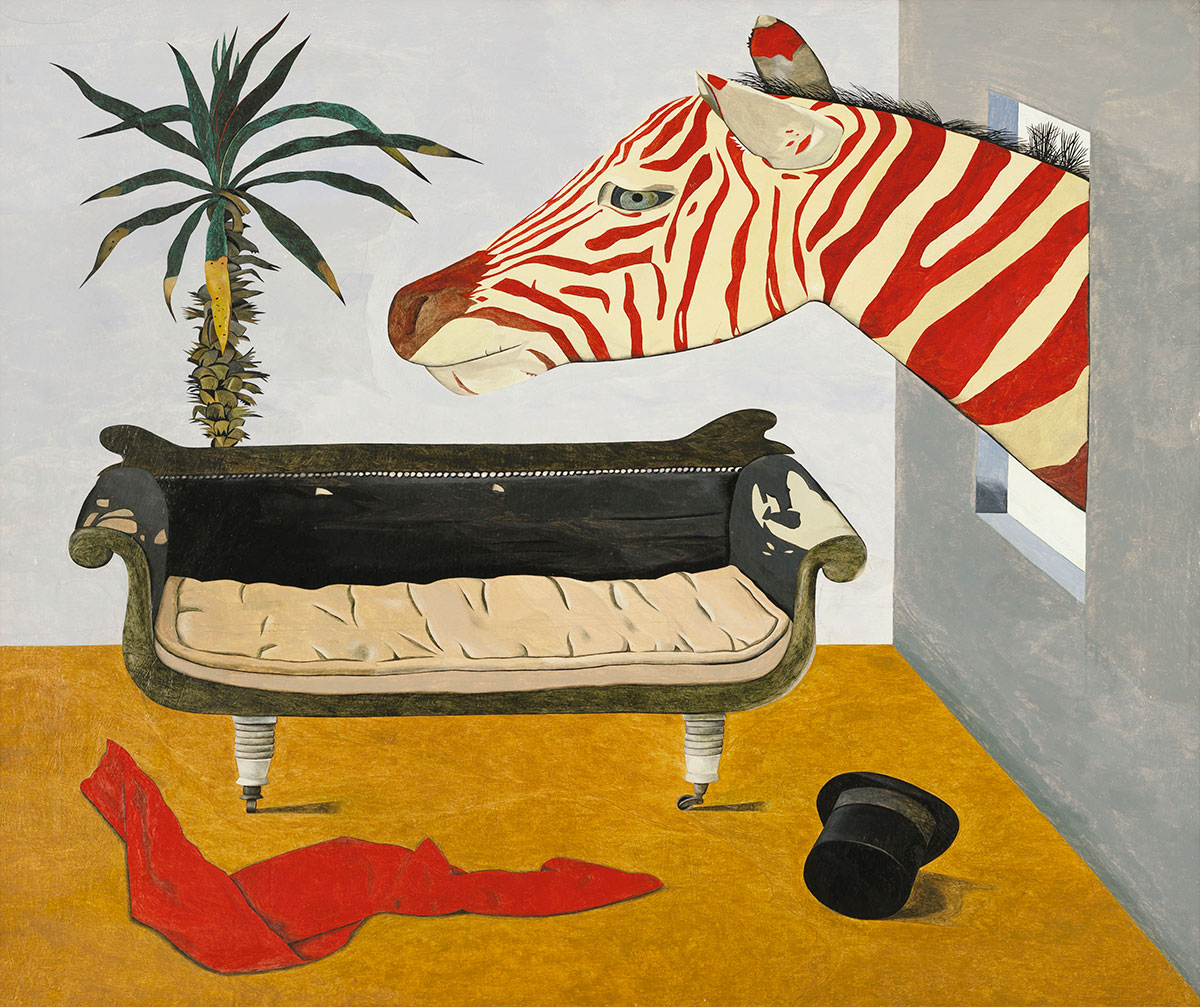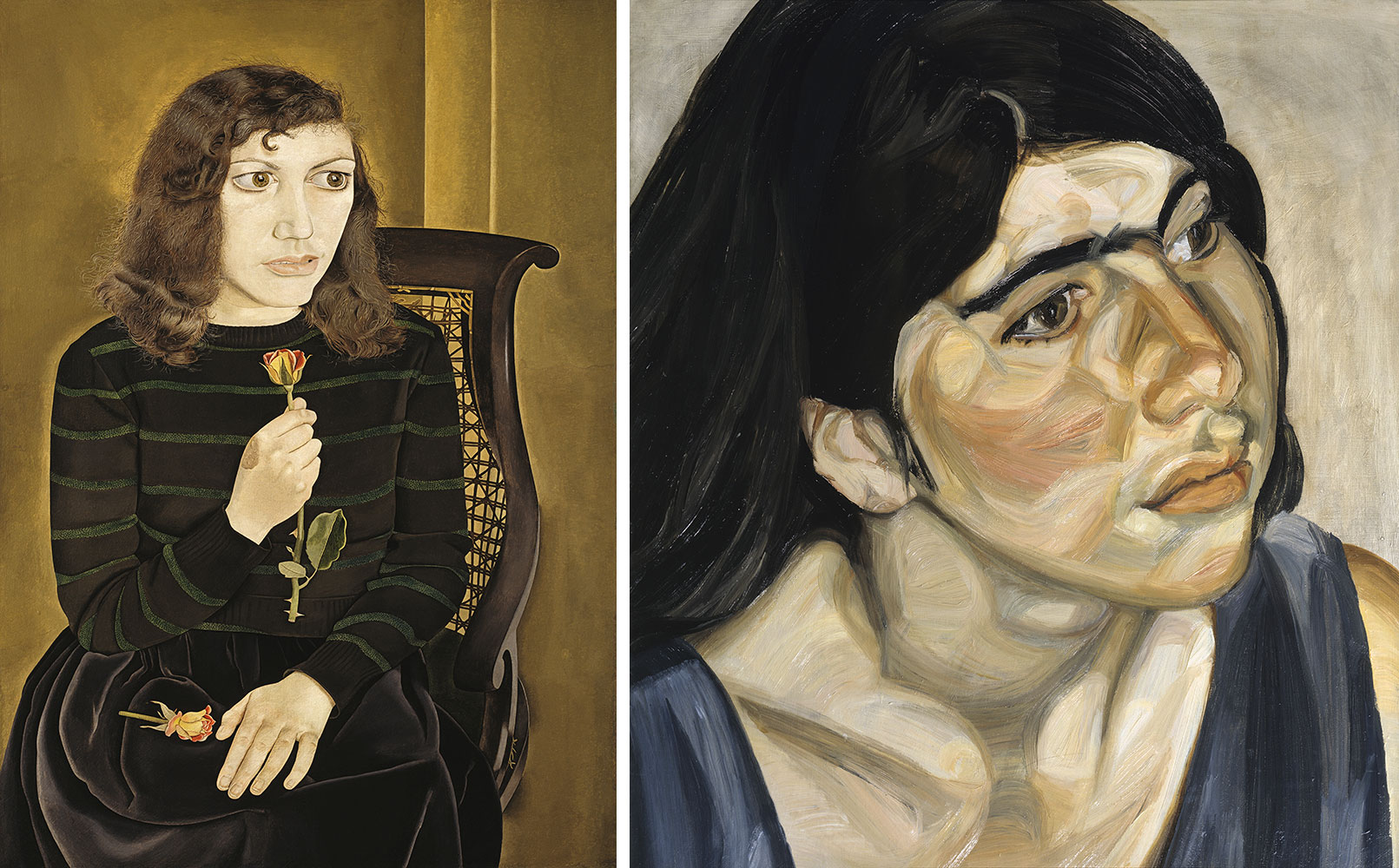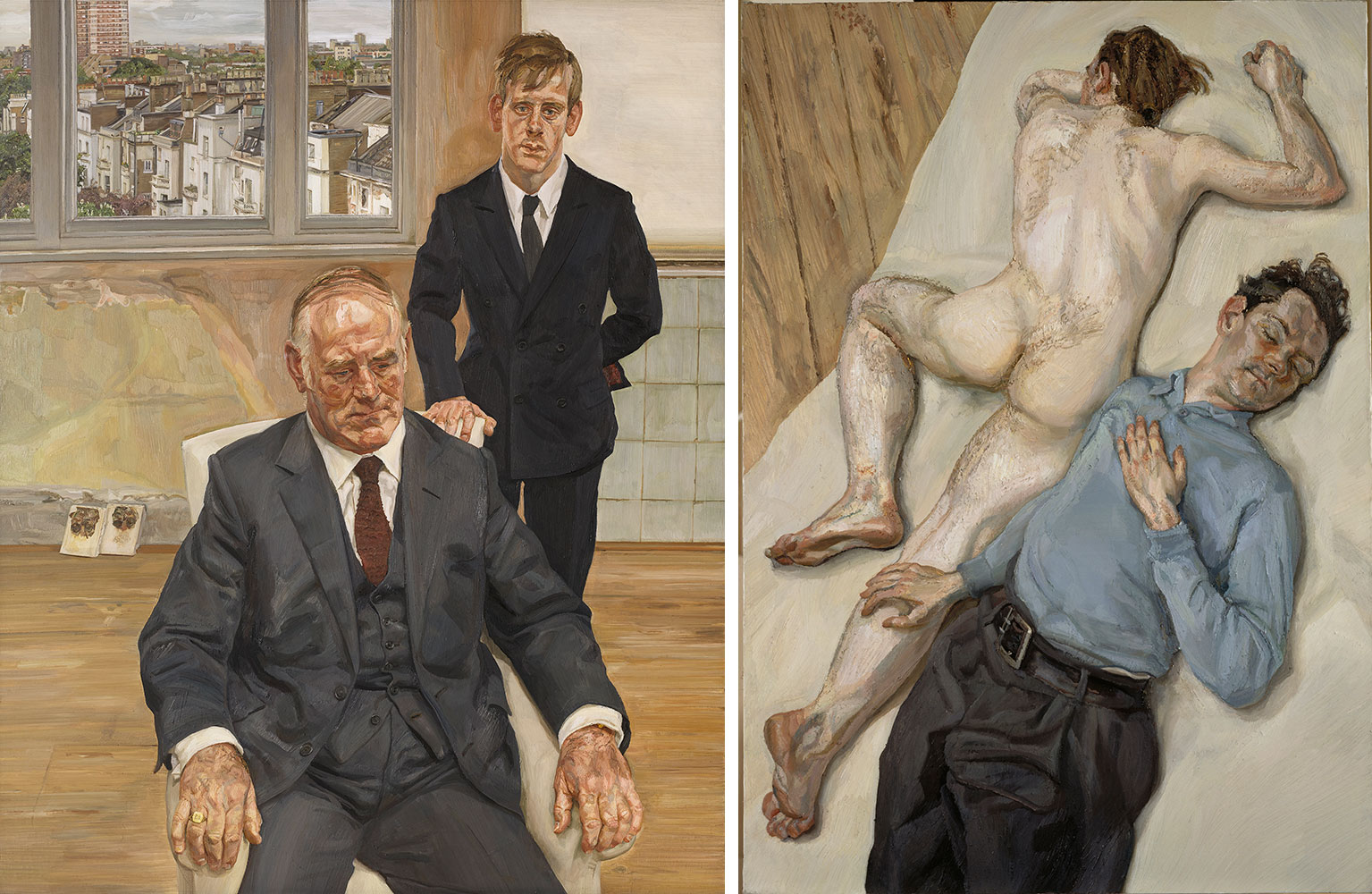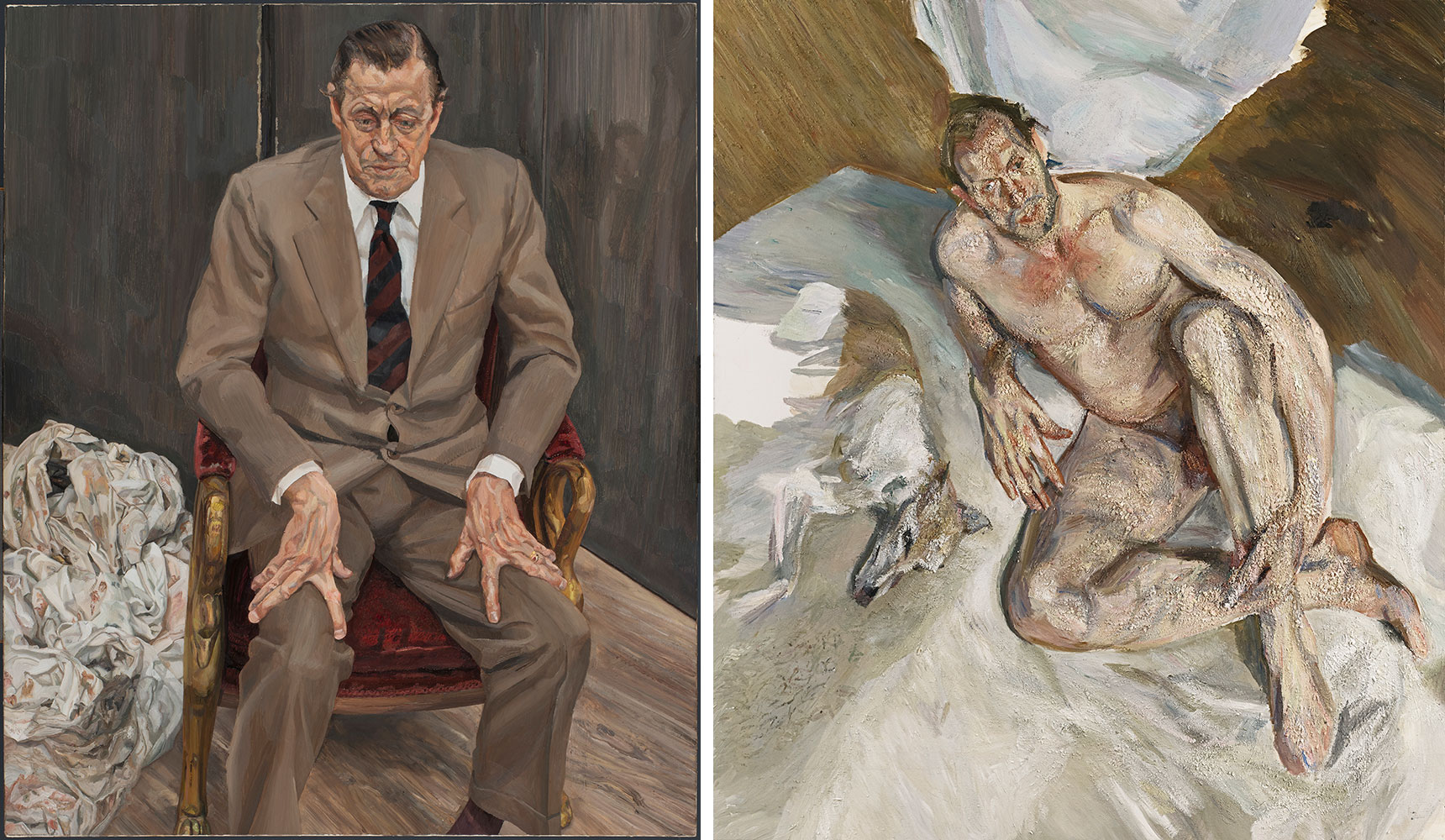PRESENTATION: Lucian Freud-New perspectives
 Lucian Freud’s impact and influence on cultural history is undeniable. Like his grandfather, Sigmund, who revolutionised the way we understand the mind, Lucian affected the history of 20th century art. Migrating from surrealism to realism and often using family and friends as his subjects, Lucian’s work’s evolved over a 70-year career.
Lucian Freud’s impact and influence on cultural history is undeniable. Like his grandfather, Sigmund, who revolutionised the way we understand the mind, Lucian affected the history of 20th century art. Migrating from surrealism to realism and often using family and friends as his subjects, Lucian’s work’s evolved over a 70-year career.
By Dimitris Lempesis
Photo: Museo Nacional Thyssen-Bornemisza Archive
The retrospective “New perspectives” marks the centenary of the Lucian Freud’s birth ans brings together more than 50 works spanning the seven-decade career of one of the most important European artists of the 20th century. Freud was an assiduous visitor to the world’s leading art museums and his work reveals a series of allusions to the great masters of the past, from Holbein to Cranach, Hals, Velázquez, Rembrandt, Watteau, Ingres, Courbet, Rodin or Cézanne, although these connections coexist with a powerfully independent approach. The new perspective adopted by the exhibition, which is the first major retrospective to be organised since Freud’s death in 2011, focuses attention on his lifelong commitment to the essence of painting. Subversive, incisive and on occasions shocking, Lucian Freud’s painting, which ran contrary to the abstract and conceptual trends that prevailed at the time when it was created, always focused on the depiction of the human body and on the portrayal of modern man. Freud’s true abiding interest throughout his work was to present painting on painting – his personal meta-artistic reflection – and the “intensification of reality” that he always strove to achieve. From his earliest works produced in the mid-20th century, painted with a primitivist detail and tinged with a neo-Romantic and Surrealist air, Freud opted for figurative art, adopting a position of resistance in relation to the prevailing abstract trends. The artist’s personality and working methods are already evident; Freud, painted slowly with a meticulous brushstroke based on the use of very fine brushes. The hieratic figures – created through the application of highly worked layers of paint against plain backgrounds and holding attributes – reveal his interest in the northern Renaissance painters. Frontality and the distance transmitted by these sitters, as we see in “Girl with Roses” (1947-48), a portrait of the artist’s first wife Kitty Garman, are the defining characteristics of these early works. Freud’s portraits of his second wife Caroline Blackwood, including “Girl in Bed” (1953) and “Girl in a green Dress” (1954), or the troubling ‘Hotel Room” exhibited in the British pavilion at the 27th Venice Biennial of 1954, mark the end of his initial period. From that point onwards he painted standing up, moving around his models with the physical closeness that allowed him to appreciate the smallest details. Freud used the broadest brushes available, while the influence of Francis Bacon led his brushwork to become loose and heavily charged with pigment. Nonetheless, his working method remained precise, slow and highly meditated with the aim of capturing the essence of his models. We also encounter numerous self-portraits from this period, in which the artist often made use of a mirror as a pictorial device, including “Reflection with two Children (Self-portrait)” of 1965, which has a surprising low-angled viewpoint achieved through the mirror on the floor. A number of the intentionally unfinished portraits reveal the artist’s pictorial technique based on accumulation, starting in the centre of the painting and allowing us to appreciate the creative process behind the work. Freud always painted from life and preferred depicting those closest to him – friends, family members and lovers – in order to achieve greater freedom. His ability to convey non-erotic intimacy in his works, including affection, friendship or paternal love, has been little investigated until now. This intimacy is above all reflected in his double portraits, such as the one of his friend the painter Michael Andrews and his wife June (1965-66), the portrait of his daughters Bella and Esther (1987-88) and “Two Men”, which depicts the artists Angus Cook and Cerith Wyn Evans. As his fame grew, Freud occasionally accepted commissions from individuals whom he respected or admired. Before he started on the portrait, the sitters were obliged to accept his demanding conditions regarding posing and the length of sessions, which always took place in his studio. These works follow the tradition of portraits of power by Rubens or Velázquez, with the models shown seated, their hands on the arms of their chair or armchair and introspective expressions. “Man in a Chair (Baron H. H. Thyssen-Bornemisza)” of 1985 and “Two Irishmen in W11”(1984-85) are among the outstanding examples. From the 1980s, Freud’s studio became the setting and subject of his paintings. It acquires growing presence as the place where he was able to impose his rules on reality, taking things to their furthest extremes. Freud’s studio is seen as a distinctive and recognisable place, with its characteristic furniture, the walls peeling or thickly crusted with gobbets of paint, and the floor shown in a rising perspective which creates a marked sense of instability in the figures and elements depicted. This is to be seen, for example, in “Large Interior W9” (1973) and “Evening in the Studio” (1993). The exhibition concludes with a section that brings together various monumental nudes; works that reveal a profound observation of the vulnerability of the human body and the plasticity of flesh as painting. The vigorous depiction of flesh on the canvas is possibly the most notable and recurrent aspect of Freud’s painting throughout his career. He started to paint nudes in the 1960s but it was above all in the late decades of his career that the deliberate emphasis on the very large size of the bodies of his models Leigh Bowery and Sue Tilley made him a pioneer in the depiction of non-normative bodies, which he painted with heavily impastoed brushstrokes like sediments of the passing of time.
Photo: Lucian Freud, The Painter’s Room, 1944, Oil on canvas. 62,2 x 76,2 cm. Private Collection. © The Lucian Freud Archive. All Rights Reserved 2022 / Bridgeman Images
Info: Curator: Paloma Alarcó, Museo Nacional Thyssen-Bornemisza, Paseo del Prado 8, Madrid, Spain, Duration: 14/2-18/6/2023, Days & Hours: Tue-Fri & Sun 10:00-19:00, Sat 10:00-21:00, https://www.museothyssen.org/en


Right: Lucian Freud, Head of a Girl, 1962, Oil on canvas. 81,2 x 71,1 cm. Private Collection, courtesy of Hauser & Wirth Collection Services. © The Lucian Freud Archive. All Rights Reserved 2022 / Bridgeman Images



Right: Lucian Freud, Two Men, 1987-1988, Oil on canvas. 106.7 x 75 cm. National Galleries of Scotland. Purchased 1988 © The Lucian Freud Archive. All Rights Reserved 2022 / Bridgeman Images






Right: Lucian Freud, Portrait of the Hound, 2011, Oil on canvas. 158 x 138 cm. Private collection. © The Lucian Freud Archive. All Rights Reserved 2022 / Bridgeman Images
